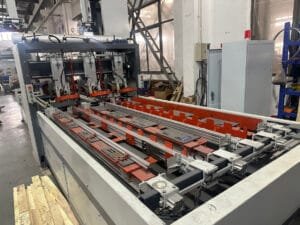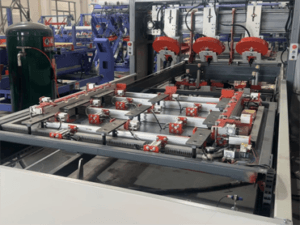High-Density Polyethylene (HDPE) is a versatile and widely used thermoplastic that has become a cornerstone in various industries, particularly in the production of durable pallets. Known for its strength, recyclability, and adaptability, HDPE plastic is an ideal raw material for creating sturdy, long-lasting pallets that can withstand heavy loads and harsh conditions. In this blog, we’ll dive into how HDPE is produced, its key characteristics, and common products made from it.

How is HDPE Produced?
HDPE is derived from petroleum through a process called polymerization. It begins with ethylene, a hydrocarbon extracted from crude oil or natural gas. In a controlled environment, ethylene molecules are subjected to high pressure and temperature in the presence of a catalyst, typically a Ziegler-Natta or metallocene catalyst. This triggers the molecules to bond together, forming long chains of polyethylene. The “high-density” aspect comes from the minimal branching in these chains, resulting in a tightly packed molecular structure. The polymer is then cooled, extruded into pellets, and prepared for further processing into various products, including pallets.
The production process is highly efficient and scalable, allowing manufacturers to tailor HDPE’s properties—such as its density and strength—to meet specific needs. This adaptability makes it a go-to material for industrial applications like pallet manufacturing.
What Are the Key Characteristics of HDPE?
HDPE stands out due to its impressive array of properties, making it a preferred choice for pallets and beyond:
- Strength and Durability: HDPE boasts a high strength-to-density ratio, meaning it’s lightweight yet capable of supporting significant weight—perfect for pallets that need to endure heavy cargo.
- Chemical Resistance: It resists corrosion from acids, bases, and solvents, ensuring longevity even in challenging environments like warehouses or shipping yards.
- Weather Resistance: HDPE holds up well against UV radiation, moisture, and temperature fluctuations, making it suitable for outdoor use.
- Recyclability: Marked with the resin identification code #2, HDPE is widely accepted in recycling programs, supporting sustainable manufacturing practices.
- Flexibility: While strong, HDPE retains enough flexibility to resist cracking under impact, a critical feature for pallets in transit.
These characteristics make HDPE an excellent candidate not just for pallets but for a wide range of everyday and industrial products.
Common Products Made from HDPE
HDPE’s versatility shines through in its many applications. Some of the most common products include:
- Plastic Bottles: Milk jugs, detergent bottles, and shampoo containers often use HDPE due to their durability and chemical resistance.
- Pipes and Fittings: HDPE’s strength and corrosion resistance make it ideal for water and gas pipelines.
- Plastic Bags: Grocery bags and trash bags leverage HDPE’s lightweight yet tough nature.
- Toys and Playground Equipment: Its safety (FDA-approved grades) and durability suit it for children’s products.
- Pallets: HDPE pallets are prized in logistics for their load-bearing capacity and recyclability.
From household items to industrial solutions, HDPE’s presence is ubiquitous, but its role in pallet production is particularly noteworthy due to the material’s ability to balance cost, performance, and sustainability.



